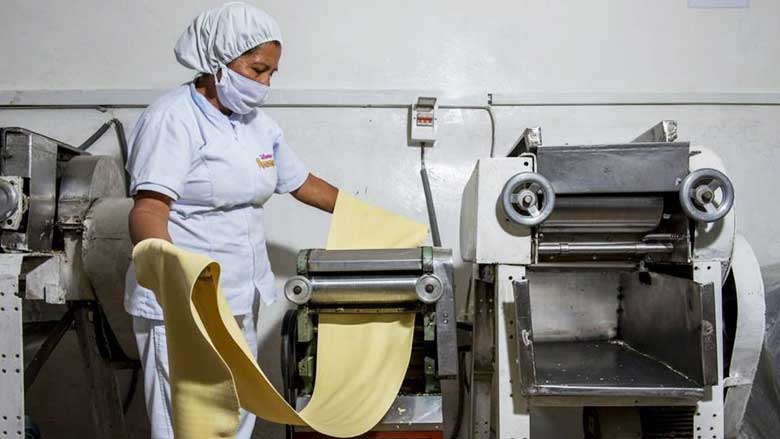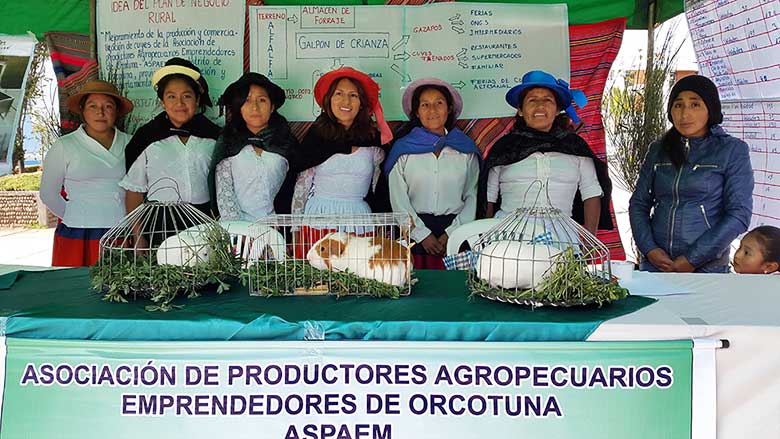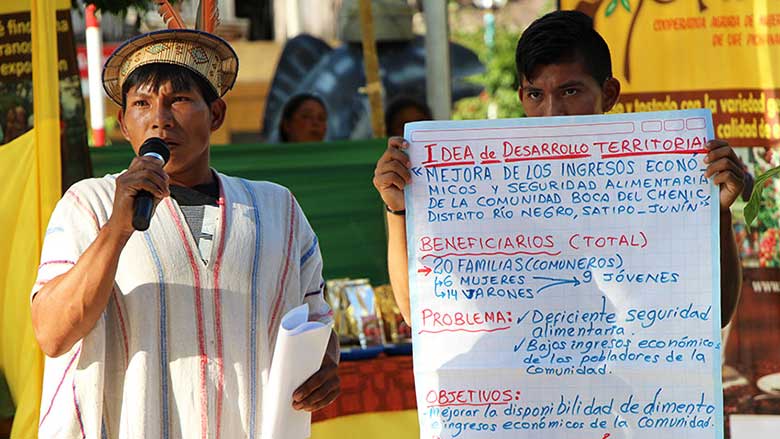Challenge
Since the start of the 2000s, in much of the country, Peru experienced relatively steady levels of economic growth and significant improvements in its macroeconomic and social indicators. Levels of inequality remained high, however, and Peru’s rural poor faced critical obstacles — such as limited access to productive markets and public services and high transaction costs — that limited their productivity, competitiveness, and innovative production processes.
Approach
The Sierra Rural Development project, commonly referred to as ALIADOS, focused on improving the economic conditions of the Peruvian rural poor. To this end, ALIADOS supported farmers and local organizations in designing, creating, and consolidating rural business plans and community-led territory development subprojects that aimed to (i) build and consolidate productive alliances and increase market access, and (ii) improve food security by increasing basic agriculture and livestock assets. ALIADOS was implemented in two phases, in 2008–2013 and in 2013–2017, by the Agrarian Productive Development Program (AGRORURAL), a government unit under Peru’s Ministry of Agriculture and Irrigation. AGRORURAL operated through co-financing schemes with local producer groups to provide workshops and promotional activities aimed at guiding and advising beneficiaries. These efforts included 1,427 territory development projects and 1,548 rural business plans. At project close in 2017, around 75 % of the total beneficiaries (87,723) had increased their productive assets by over 65 %, compared to 2008; rural businesses had increased their net sales volumes by over 35 % from 2013 to 2017; and this community-driven project had contributed to overall national efforts to revitalize the economy of the Peruvian Sierra region, benefiting 87,723 households.
Results
ALIADOS improved the assets and economic conditions of rural producer groups and strengthened the government’s capacity to implement a rural strategy for the Sierra region. The project contributed to the following significant results:
- Improvement of assets: In its two phases, ALIADOS supported 1,427 territory development projects, financing an average investment of US$19,632 per project. During the first phase (2008–2013), the principal productive assets of 75 % of the beneficiaries increased by around 30 %. By the end of the second phase (2013–2017), around 75 % of total beneficiaries had increased their productive assets by over 63 %.
- Improvement of economic conditions: Based on sales achieved under the 1,548 rural business plans supported by ALIADOS during both phases, beneficiaries experienced increases of 37 and 35 % in net sales volume, respectively. The most significant gains in sales volume were attained by agricultural products such as potatoes, maize, coffee, and cacao, while the bulk of business plans’ financing went to livestock subprojects. On average, ALIADOS financed an investment of US$24,732 per business plan.
In addition, the project had significant impacts in other areas, such as female empowerment, private and public sector financing mobilization, poverty reduction, and shared prosperity.
- Under the second phase of ALIADOS (2013–2017), 59 % of all the rural business plans and 36 % of territory development projects had steering committees with female participation.
- ALIADOS mobilized about US$13.9 million in private financing and US$12.7 million in government funding.
- The propensity-score-matching analysis carried out in 2016 estimated that the prevalence of poverty in territories where ALIADOS was undertaken is 8.9 % lower than in territories where the project did not intervene.
- Unskilled employment, including both wage and family employment, was created in primary production businesses as well as in agricultural and livestock production. Business plans generated 1,068 permanent jobs: 53 % unskilled family labor, 23 % unskilled wage labor, and 24 % skilled wage labor.
Unintended but meaningful impacts such as the participation of the youth and institution building were also project benefits. For instance, many beneficiaries had their first interaction with financial services as a result of the project. Many of the producers who organized and worked together for the first time under the project continue to operate collectively.


